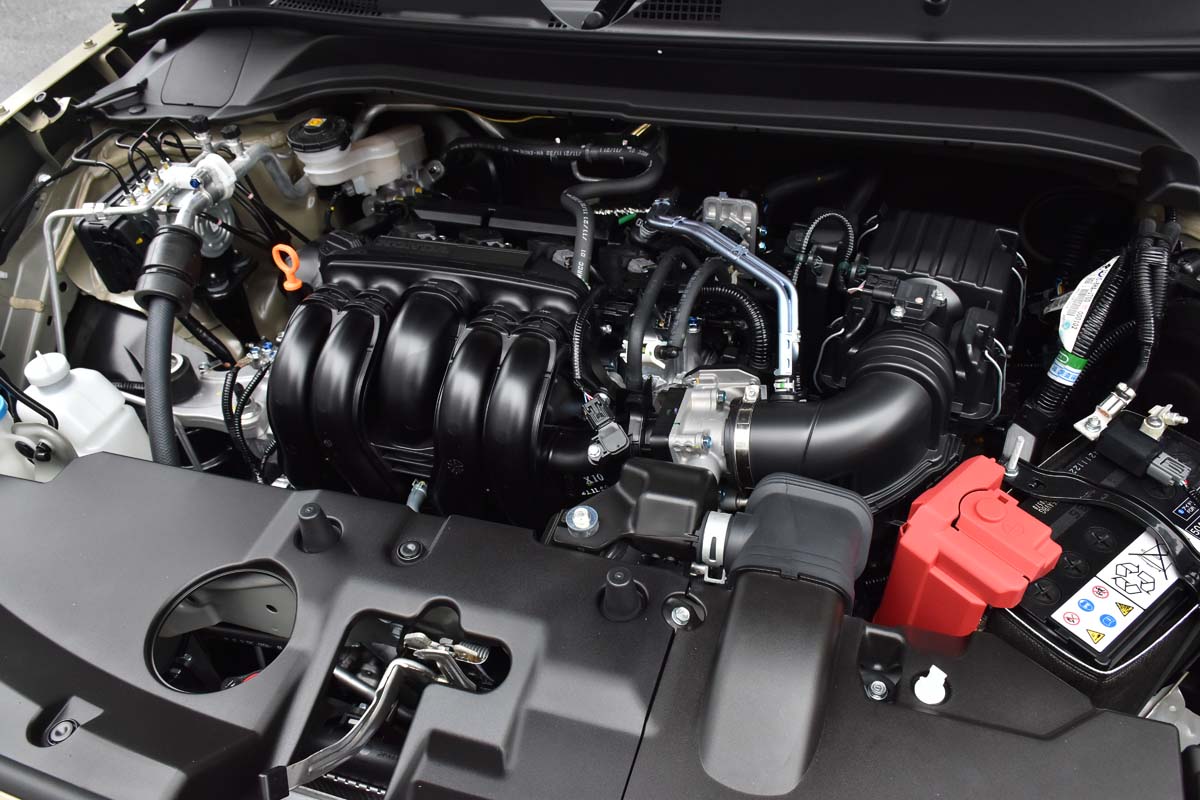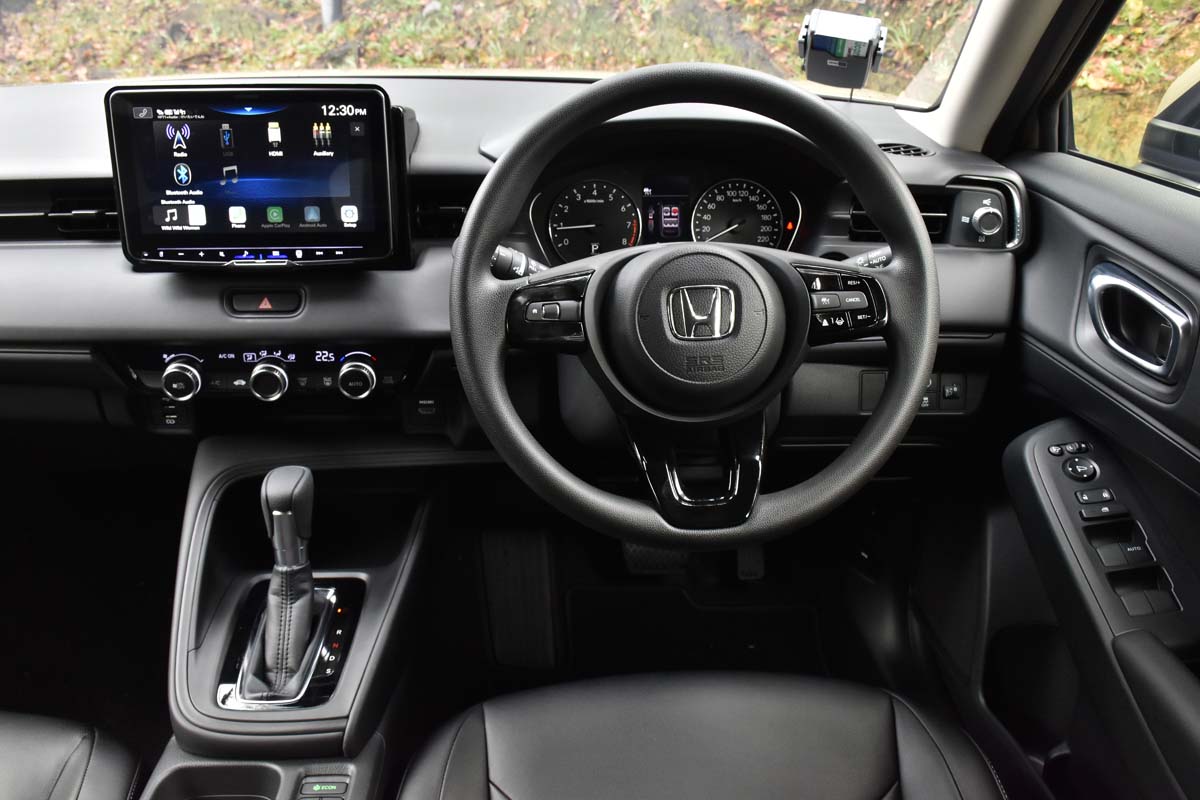
The highly-anticipated next-gen Honda HR-V has arrived and it’s more of the same good stuff, but can it keep pace with the other urban crossover SUVs now flooding Singapore?
SINGAPORE –
The new car that is no secret to anybody waiting for one has begun selling at Singapore’s official Honda dealership, Kah Motor. There’s a hybrid and regular petrol version of the Honda HR-V on offer, and here we get our hands on the standard petrol version, powered by a 1.5-litre four-cylinder engine.

The previous generation HR-V is one of the longer serving models from Honda, having been launched in 2013 and continuing until the end of 2021 with two minor model updates in between. It was actually the second model to be named the HR-V, with the first one an early iteration of an urban SUV with a unique three-door styling, available from 1999 to 2006 worldwide.

This makes the car seen here the third-generation version. Like before, it’s built on the same platform as the small Honda Jazz hatchback. Jacked up to the style of an urban crossover SUV, the HR-V offers more space and better road visibility than a small hatchback but without the higher wear-and-tear maintenance costs associated with a medium or large SUV.
Design and Appearance
Rather than setting new trends, Honda seems content to mostly follow existing ones for now. Still made in Japan, the HR-V takes on the silhouette of the now-trending coupe-like urban SUV with a sloping roofline and tapered rear end. It retains the hidden rear door handles of the previous-gen model, which still looks like a clever bit of design now, almost 10 years after its introduction.

The front end of the car, with the wide intake grille disguised with colour-coded slats, appears to be a way of mimicking the grille-less noses of electric cars, or maybe it was inspired by the kendo bogu. Whichever the case, it’s the HR-V’s standout visual feature and makes the car look wider than its real width of 1,790mm.

The HR-V 1.5 DX gets 16-inch wheels against the 18-inch wheels the the HR-V e:HEV hybrid. While they do look quite small and do not offer a lot of visual presence, the smaller wheels allow for more rubber sidewalls on the tyres, which in turn should make for a plusher ride than one with larger wheels equipped.

Another ‘now-trending’ component is the full-width lightbar at the tail, though in the HR-V’s case it’s intersected right in the middle with the Honda emblem.
Interior and Features
The new HR-V (which apparently stand for ‘High-rider Revolutionary Vehicle’) retains that party trick of packing the entire rear bench out of the way to make space for carrying really tall items. First seen in the earliest Honda Jazz, the Magic seats were renamed as Ultra seats in recent Honda marketing literature, but they work the same way. The seat bottom lifts up and out of the way, but even with them in standard use position there remains a large cubby hole under them for stashing away things like umbrellas.

Up front, an obvious sticking point is the entertainment system controls, which, for better or worse, is not from Honda. It’s an aftermarket head unit with a nine-inch screen from Alpine and so does not have full integration into the vehicle.
This really sticks out when you want to change the playback source, radio station, or volume and you’ll need to tap on the main screen as the steering wheel does not have any buttons for them. Contrast this to the excellent Honda Display Audio unit on the Jazz hybrid we tested.

However it’s a very well-specced head unit with a lot of in-depth tone adjustments that you will never find on most factory-fitted ones. You also get full mobile phone connectivity, with wireless CarPlay and Android Auto.

The dashboard is a very clean, neat piece of design with cues taken from the Honda Jazz. The side air vents feature the direct air and diffused air flow adjuster also found on the Honda Jazz. It’s a feature that’s very good for allowing air to move through the cabin but not blasting into your face.

Another omission on the petrol variant of the HR-V is a leather-wrapped steering wheel.That’s reserved for only the e:HEV hybrid. Here you get the bare urethane to hang on to.

Rear legroom is one of the best in this class of vehicle, and as you would expect, boot space is also commendable for a car of this size. These were some of the top reasons why the previous HR-V was so popular and in the face of other competition the new car can still hold its ground.
Rear air conditioning vents are also standard, ensuring everyone onboard stays cool. You’ll find another interesting feature overhead in the form of two touch-activated, round LEDs for lighting up the back seats. Very classy and practical.
Driving Experience
The base model HR-V falls a bit flat here. It’s not a bad car to drive and features above average sound insulation along with good high speed stability, but the dynamic experience is lacking.

As an appliance type car it excels, but it’s not very quick accelerating from a standstill. You might think that it’s not important for a family car, but quick bursts of speed is an essential component for slipping quickly and safely between gaps in traffic when driving in Singapore.
When something like a base model Skoda Octavia can punch through the 0-100km/h in just 8.5 seconds, the more than 11 seconds that many Japanese cars take to do the same seem slow in comparison these days.

The continuously variable transmission is good at helping keep fuel economy at a respectable figure however, and we recorded 6.5l/100km on average after about 200km of driving in mixed conditions. Accelerating hard will result in the usual four-cylinder engine drone while the car gains speed, but it’s still a smooth engine that doesn’t chatter excessively.

The 118 horsepower total keeps the car within the Category A COE in Singapore which in theory will keep its price as low as it can reasonably be these days, but one does wonder how much more engaging the car will be with a more powerful engine.
Suspension setup is still good though, and the car tracks smoothly through corners and rides over rough roads very well.

Another big plus point is that the car comes equipped with the Honda Sensing suite, the brand’s name for its active safety systems. Lane keeping assist, lead car departure notification, road departure mitigation, and collision mitigation braking come fitted as standard even on the base model.
Competition and Pricing
The previous-generation HR-V in all forms was an exceptionally strong seller in Singapore, but the driving landscape has changed since then. Rising petrol prices, the push towards electrification, and reduced COE quotas have really put pressure on the middle class buying public, which the HR-V is targeted right at.

Smaller cars like the Kia Sonet and Kia Stonic are being looked into by many shoppers more out of practical necessity than choice, as the Honda HR-V used to occupy a lower price point when COE prices weren’t as extreme as they are now.

Conclusion
Is the Honda HR-V still a relevant competitor now? Brand loyalists and consumers who love the familiarity of the HR-V will still line up for one, and on the whole it’s a spacious, well-developed product but it’s becoming more of an appliance vehicle in the same vein as a Toyota Corolla Altis than cutting-edge exciting.
The hybrid variant, which is due to go on sale here shortly, might be friendlier at the petrol station but will cost more up front, and be not very much quicker on the move. We’ll reserve judgement on that until the car arrives.
Credits: CarBuyer Author: Lionel Kong
Original Source: https://www.carbuyer.com.sg/2022-honda-hr-v-review-singapore-price/











